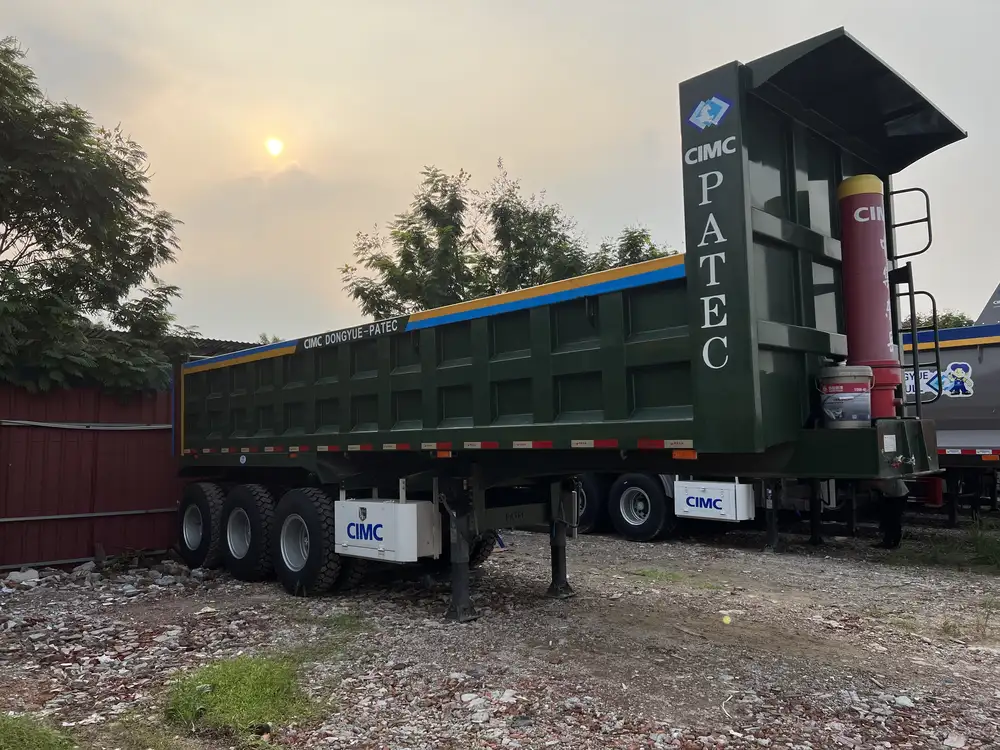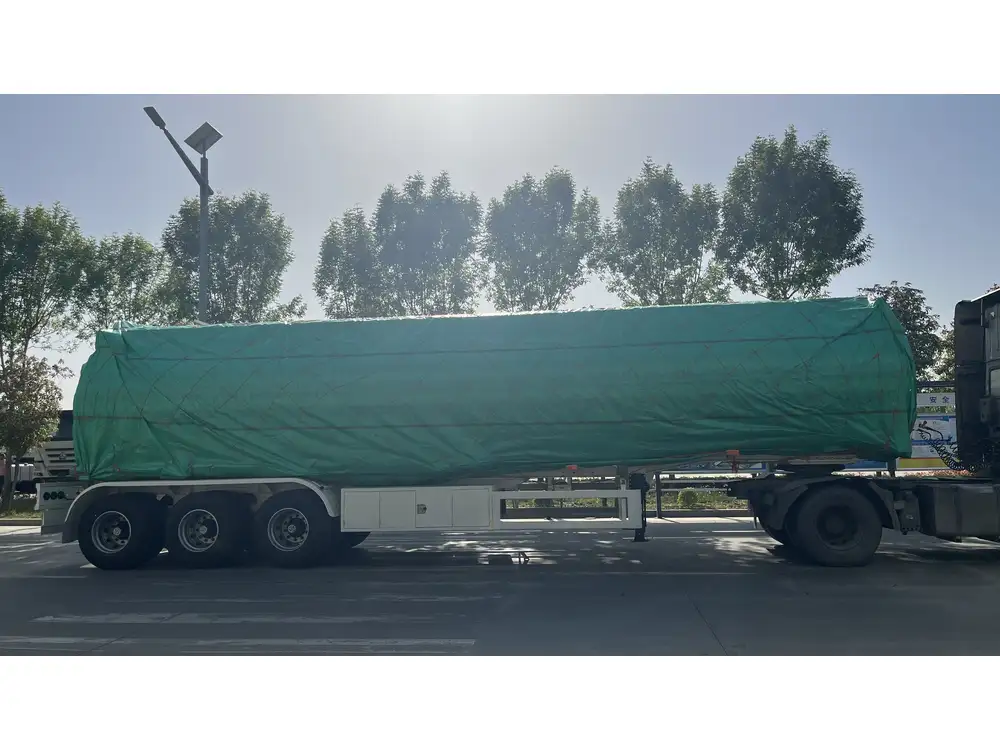When it comes to hauling freight, maximizing the utility of a semi-trailer is paramount. Many professionals in the logistics and transportation industry ponder a crucial question: Can you put a hitch on a semi-trailer? This article dissects the feasibility, regulations, advantages, and technical considerations associated with installing hitches on semi-trailers, while also emphasizing best practices and safety measures.
Understanding the Basics of Semi-Trailers and Hitches
What is a Semi-Trailer?
A semi-trailer is a type of trailer that cannot stand alone and requires a tractor unit for transport. Typically used in freight transport, semi-trailers are available in various configurations, including flatbeds, enclosed trailers, and refrigerated models. The design allows for a considerable payload capacity while enabling easy coupling with a tractor.

Types of Hitches Commonly Used
Fifth-Wheel Hitches:
- Designed for the coupling of the semi-trailer to the truck.
- Offers stability and strength for heavy loads.
Gooseneck Hitches:
- Suitable for agricultural or specialized trailers, providing better maneuverability.
- Positioned over the truck bed, offering enhanced weight distribution.
Bumper Pull Hitches:
- Commonly used with smaller trailers; may not be suitable for traditional semi-trailers.
- Coupled at the rear bumper of the towing vehicle.
Regulations and Requirements
Before contemplating the installation of a hitch on a semi-trailer, one must consider national and local regulations. Various factors can dictate whether a hitch can be fitted:
| Regulation Aspect | Description |
|---|---|
| Weight Ratings | Ensure that the hitch and trailer collectively meet weight capacity regulations. |
| Safety Standards | Follow the guidelines set by regulatory bodies like the DOT (Department of Transportation) and FMCSA (Federal Motor Carrier Safety Administration). |
| State Laws | Specific states may have additional laws governing modifications on semi-trailers. |
The Feasibility of Installing a Hitch on a Semi-Trailer

Assessing Compatibility
It is essential first to assess whether your semi-trailer is compatible with a hitch installation. Factors include:
- Chassis and Frame Design: Ensure the trailer’s frame can withstand additional stress.
- Weight Distribution: Distribution of weight is critical. Improper distribution can lead to safety hazards.
Technical Considerations
Mounting Points:
- Identify suitable mounting points for the hitch on the trailer frame.
- Reinforcement may be needed at the mounting site to handle towing forces.
Electrical Connections:
- Hitches often involve wiring for brake lights and turn signals. Ensure proper electrical connections are established.
Professional Installation:
- Engaging a qualified professional for installation can mitigate risks and ensure compliance with regulations.
Evaluation of Cost
The financial aspect of installing a hitch is another vital consideration. Costs can vary based on:
| Cost Factor | Estimate |
|---|---|
| Hitch Price | $200 – $1,500 depending on type and quality |
| Installation Fees | $100 – $500 for professional installation (varies by location and complexity) |
| Modification Costs | Additional welding or reinforcement may add to costs |

Advantages of Installing a Hitch on a Semi-Trailer
Installing a hitch on a semi-trailer can offer several advantages that can enhance operational efficiency and expand functionality.
Increased Versatility
Having the ability to attach additional trailers allows you to diversify your transport options. Whether it’s a flatbed for machinery or a specialized trailer for specific goods, this versatility can improve service offerings.
Enhanced Payload Capability
By utilizing a hitch, operators can effectively increase the overall payload capacity. It allows for the transport of more goods, potentially leading to higher revenue per trip and improved logistical efficiency.

Better Load Management
Hitching additional trailers can enable better load management. Longer combinations of vehicles (LCVs) can be organized to optimize the distribution of goods, allowing for fewer trips while maintaining compliance with weight regulations.
Safety Considerations
Importance of Safety Inspections
Frequent inspections after installing a hitch are crucial. Use these checks to:
- Assess the integrity of connecting hardware.
- Ensure no excessive wear on tires and suspension.
- Verify that electrical systems remain functional.

Common Safety Tips
Using Appropriate Hitching Method:
- Always follow the manufacturer’s guidelines when connecting a hitch.
Weight Distribution:
- Distribute payloads evenly across all trailers to prevent undue fatigue on the hitch.
Regular Maintenance:
- Ensure regular check-ups and maintenance of trailer and hitch components to promote longevity and performance.
Challenges and Potential Issues
Troubleshooting Hitch-Related Problems
Common issues that can arise from hitching a trailer to a semi include:
| Issue | Description |
|---|---|
| Swaying or Instability | Can occur if weight distribution is uneven, affecting stability during transport. |
| Hitch Compatibility | Not all hitches are designed for all trailer types; using the wrong hitch can lead to accidents. |
| Electrical Failures | Poor connections can result in malfunctioning brake lights and signals, creating safety hazards. |

Tips for Overcoming Challenges
Proper Training:
- Train drivers in safe hitching practices and operational protocols.
Use of Technology:
- Implement advanced trailer stability systems or sway control devices technology where possible.
Feedback Loop:
- Establish a feedback loop with drivers to identify recurring issues and make necessary adjustments.
Conclusion
The installation of a hitch on a semi-trailer is not merely a tactical decision; it’s a strategic maneuver that can enhance your operational capabilities. With a plethora of considerations—ranging from technical evaluations and regulations to budgeting and safety—it is crucial to gather comprehensive knowledge before proceeding. The potential to boost payload versatility, optimize load management, and venturing into newly profitable avenues considerably outweighs the challenges, provided that safety requirements are met and technical installations are conducted professionally.
By following this guide, you can intelligently navigate the question, “Can you put a hitch on a semi-trailer?” and ultimately make informed decisions that lead to increased efficiency and profitability in your transportation endeavors.



